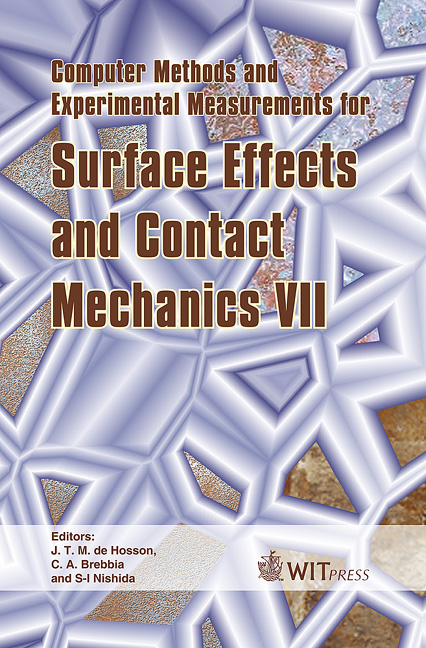Residual Stresses In Co-based Laser Claddings Investigated By Lab X-rays And Synchrotron Diffraction Techniques
Price
Free (open access)
Transaction
Volume
49
Pages
10
Published
2005
Size
1,686 kb
Paper DOI
10.2495/SECM050241
Copyright
WIT Press
Author(s)
U. O. B de Oliveira, V. Ocelik & J. Th. M. De Hosson
Abstract
It is a well known fact that cracking related problems may occur during the laser cladding deposition process. In particular for the improvement of thick coatings it is of prime interest to know how processing parameters affect the residual stress state. The residual strains developed in Co-based thick clad layers were investigated by laboratory Cu-Kα and Synchrotron X-rays. On the surface the strain tensor is determined by the Sin2Ψ technique. Strain mapping performed by synchrotron radiation shows that tensile stresses dominate the upper region but may change into compressive towards the inner part of the coating. The effect of laser overlap is discussed and a mechanism for stress concentration is proposed. Keywords: laser cladding, residual stress, X-rays, synchrotron. 1 Introduction The laser cladding technique by powder injection is an attractive methodology that allows the deposition of thick protective metallic coatings on weaker substrates [1,2]. The process consists of producing a protective layer on the surface of the substrate using a high power laser beam as a heat source while a carrier gas is used to form a cladding powder stream blown under the laser beam. The substrate is scanned by the laser beam creating a melt pool with a depth that corresponds to the thickness of a single clad generated in one step. High thermal gradients involved in the process are responsible for the generation of residual stresses, often of harmful tensile nature [3]. During
Keywords
laser cladding, residual stress, X-rays, synchrotron.





